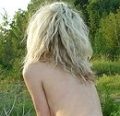
I wrote in my sketchbook this past weekend these lines:
One bare tree
distant hilltop –
alone or lonely?
I was inspired by the photograph shown here. My first impression was that it was a lonely scene, sadly absent of people, the tree absent of leaves. But just in writing those two very short lines, I paused and thought that it could just as well be that the tree and my feeling is of being the kind of alone that is solitude – something many of us crave at times.
My three lines look like a haiku, though they don’t follow any haiku conventions. I’m not a fan of the Westernized 5/7/5 syllable structure anyway. I took a classical haiku anthology off the shelf and looked randomly through it. The first haiku that resonated was by Masaoka Shiki.
Toward those short trees
We saw a hawk descending
On a day in spring.
That seems like a lonely scene too. “Short” is an interesting way to describe trees – though tall is very common. There is also a secondary ominous feeling in the poem. Why do hawks descend? Generally, to capture prey. Do I feel something for the prey? A mouse or vole – probably not. A cute baby bunny – yes.
Matsuo Bashō is one of my favorite haiku poets.
on a bare branch
a crow has alighted
autumn evening.
That’s it. One image. That is a poem that I have paired in workshops with “In a Station of the Metro” by Ezra Pound.
The apparition of these faces in the crowd;
Petals on a wet, black bough.
I have always imagined Pound looking out of a window at the Paris Metro and blurring the faces (maybe because the window was raindrop-covered?) into colored petals on a black (night?) background.
Sometimes this small poem is described as an early English haiku. But it doesn’t follow most of the conventions. I always thought the title (very un-haiku) should be printed as the first line. Haiku don’t need titles to explain. If you need to explain the setting, put it in the poem, usually by using one word (petals signal spring). But the imagism idea in haiku and Pound is certainly there.
The wren
Earns his living
Noiselessly.
I don’t know the original version of Kobayahsi Issa’s wren poem and translations of poem vary greatly. No 5-7-5 in translation.The image is clear and so is the thought behind it.
Haiku is too often dismissed as slight and too easy. I have a friend who writes mostly haiku and short forms and she is always hesitant to do readings, even open mic readings because people don’t react well to hearing a group of haiku. One time I heard her read and she had grouped haiku like stanzas and read them as one poem (5 haiku about birds) and that went over better.
So, is this Basho poem sad/lonely or peaceful/alone/solitude?
I suppose it depends on where you are right now.
no one travels
along this way but I
this autumn evening
